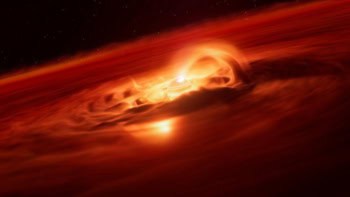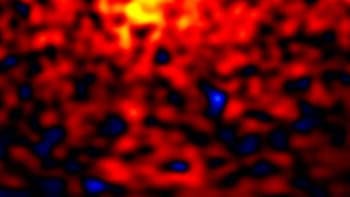Astronomers have been announcing evidence for the discovery of new extrasolar planets on a regular basis in recent months. In May, for example, one group released what it claimed was the first visual evidence for a planet orbiting another star. And earlier this week Jane Greaves of the Joint Astronomy Centre in Hawaii claimed that dust debris around Epsilon Eridani, one of the stars nearest the Sun, was evidence for planetary formation. However Paul Kalas of the Max Planck Institute of Astronomy in Heidelberg, Germany, believes that many astronomers are overstating their case. "The existing evidence suggests that planet-mania has struck once again, " he writes in the latest issue of Science (281 182). Kalas submitted his paper before Greaves and co-workers presented their findings at the Protostars and Planets Conference in Santa Barbara, California. Her group has also submitted a paper to Astrophysical Journal Letters.
Greaves and colleagues used the SCUBA instrument on the James Clerk Maxwell Telescope in Hawaii to look at the dust around Epsilon Eridani. SCUBA operates at submillimetre wavelengths, where the glare from the central star is weak. The same instrument detected dust around three nearby stars in April. “If an astronomer could have measured what our solar system looked like four billion years ago, it would look very much like Epsilon Eridani looks today, ” said Benjamin Zuckerman, one of the team. “What we see looks just like the comet belt on the outskirts of our planetary system, only younger, ” said Greaves. “It’s the first time we’ve seen anything like this around a star similar to our Sun. In addition, we were amazed to see a bright spot in the ring, which may be dust trapped in orbit around a planet.” If the image really is cometary debris, the number of comets orbiting the star must be 1000 times larger than in the solar system. Kalas, however, argues that there is only “weak support” for some of the previous claims by astronomers that dust clouds and central cavities indicate planetary formation. Our experience and theories of planetary formation are limited to solar-type stars, says Kalas, not to massive and more luminous stars such as those reported by some groups. “We cannot uniquely identify the cause of the dust blobs and dust cavities, ” he concludes Kalas reserves his most stringent criticism for the group which claims to have



